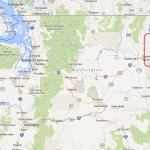Series: The Wrong Side of the Tracks

Westbound oil train, Essex, MT. Photo credit Roy Luck.
The Northwest stands at a crossroads: if coal and oil companies are permitted to ship by train the staggering volumes of fuel they have planned for the region, they will, by sheer physical necessity, heavily disrupt vehicle and rail traffic for hours each day in small towns and big cities alike. To make clear the magnitude of these impacts, Sightline has analyzed public at-grade rail crossings all along the route from Sandpoint, Idaho to Cherry Point, Washington, past schools, churches, homes, small businesses—all the various pieces of our Northwest communities that will face lasting impacts and dangers from massively scaled-up oil and coal rail traffic.
Have photos of a crossing featured in the series? Share them in our “Wrong Side of the Tracks” Flickr pool.
For analysis of potential spills on Northwest waters, see the series “The Risk of Northwest Oil Spills.”
For broader analysis of the oil-by-rail industry in the Northwest, see the series “The Northwest’s Pipeline on Rails.”





